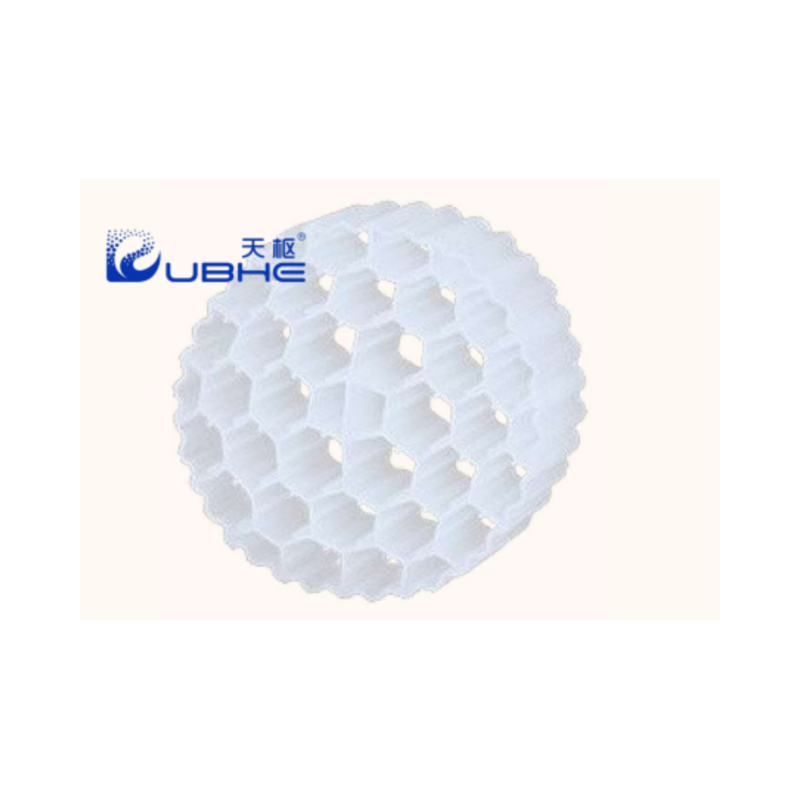Product Introduction
1. System Classification by Microbial Growth Morphology
Wastewater biological treatment systems can be fundamentally categorized into two types based on microbial growth morphology:
Suspended growth systems (e.g., activated sludge and MBR)
Biofilm systems (e.g., trickling filters, fixed biological media, and MBBR)
2. Comparative Advantages and Disadvantages
Biofilm Reactors:
Advantages:
High tolerance to environmental fluctuations and toxic substances
Superior organic loading capacity
Key Technological Advantages:
Combines benefits of both systems:
High-load capacity of biofilm systems
Stable treatment performance
Excellent mass transfer characteristics of activated sludge
Continuous carrier movement ensures:
Uniform biofilm-water contact
Enhanced mass transfer efficiency
Technical Spec
|
Project
|
Unit
|
Parameter
|
|
Spec.
|
mm
|
Ф30×Ф10,Ф25×Ф12,Ф25×10, Ф25×Ф4,Ф10×Ф8
|
|
Material
|
-
|
HDPE
|
|
Efficient Surface
|
m2/m3
|
>800
|
|
Void ratio
|
%
|
>95
|
|
Dosing ratio
|
%
|
15~70
|
|
Membrane hanging time
|
days
|
5~15
|
|
Nitrification efficiency
|
gNH4-N/m3.d
|
400~1200
|
|
BOD5 Oxidation efficiency
|
gBOD5/m3.d
|
2000~10000
|
|
COD Oxidation efficiency
|
gCOD/m3.d
|
2000~15000
|
|
Packing density
|
g/cm3
|
0.94-0.97
|
|
Specific gravity
|
g/cm3
|
>0.96
|
|
Specific gravity after filming
|
g/cm3
|
1
|
|
Service life
|
year
|
≧15
|
|
PH
|
-
|
5~11
|
|
Applicable temperature
|
℃
|
35~65
|
Main uses
1. Sewage treatment MBBR and biofilter process carrier:
2. Wastewater upgrading projects to improve the standard, improve the amount of
New projects to save investment, land planning
3. water reuse
4. domestic sewage reuse biological treatment of miscellaneous drainage water reuse biological treatment
5. river training denitrification, phosphorus removal, decarbonization, water purification
6. aquaculture denitrification, decarbonization, improve the living environment of fish

 Your message must be between 20-3,000 characters!
Your message must be between 20-3,000 characters! Please check your E-mail!
Please check your E-mail!  Your message must be between 20-3,000 characters!
Your message must be between 20-3,000 characters! Please check your E-mail!
Please check your E-mail! 

